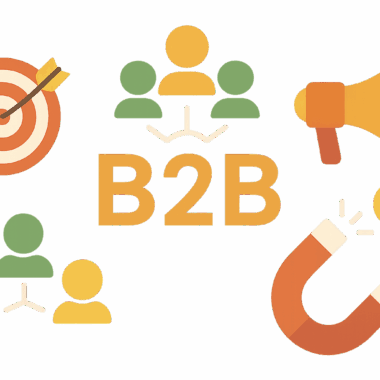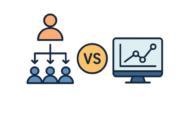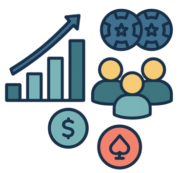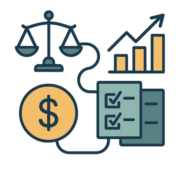

Best B2B Customer Acquisition Strategies in 2025 – The Full Guide

Content:
- Understanding B2B Customer Acquisition
- Ideal Acquisition Process
- Emerging Trends in 2025
- Step by Step Implementation Plan
- Conclusion & Next Steps
- FAQ
The B2B customer acquisition landscape is undergoing significant changes in 2025. As decision-making processes grow more complex and digital channels evolve, businesses must adapt their strategies to remain competitive. Buyers are more informed, expect personalized experiences, and increasingly prefer remote or digital-first interactions.
This comprehensive guide offers practical, data-driven insights into the most effective B2B acquisition strategies. It aims to help marketers and sales teams optimize their efforts by leveraging modern tools, proven techniques, and emerging trends tailored for the 2025 B2B environment.
Understanding B2B Customer Acquisition
B2B customer acquisition refers to the process of identifying, targeting, and converting businesses into paying clients. Unlike B2C, the B2B journey involves longer sales cycles, multiple stakeholders, and a higher need for detailed information and trust-building.
Effective B2B acquisition strategies are built on a deep understanding of the target company’s pain points and procurement process. It requires aligning marketing and sales teams, deploying tailored messaging, and offering tangible value at every touchpoint.
Ideal Acquisition Process
An ideal acquisition process incorporates five core principles: relevance, flexibility, diversification, scalability, and persistence. Each principle ensures that efforts remain focused, adaptive, and capable of delivering results across varying markets and buyer personas.
The B2B acquisition funnel typically consists of five stages: awareness, engagement, qualification, conversion, and retention. Successful campaigns optimize each stage by using data to guide content creation, nurturing, and outreach efforts.
Content & SEO Marketing
Content and SEO remain foundational in B2B acquisition. High-value content that solves specific pain points of your ideal customer profile (ICP) not only attracts qualified traffic but also builds trust over time. In 2025, effective SEO is centered around topical authority, structured data, and user intent. Companies must produce expert-level articles, white papers, and technical documentation optimized for both search engines and human readability.
Key strategies include:
- Creating content clusters around core topics.
- Using AI for SERP analysis and keyword mapping.
- Embedding lead capture elements into content assets.
SEO should not be isolated from the sales funnel. Instead, each content piece must be mapped to a buyer journey stage.
Account-Based Marketing (ABM)
ABM in 2025 requires precision targeting and hyper-personalized content. It is a strategic approach where marketing and sales collaborate to engage specific accounts that offer the highest value potential. ABM allows businesses to deploy bespoke campaigns tailored to an account’s industry, challenges, and purchasing dynamics.
Successful ABM campaigns often combine personalized landing pages, dynamic email sequences, and sales outreach backed by detailed account intelligence. A typical ABM process includes:
- Identifying high-value target accounts.
- Crafting unique value propositions.
- Coordinating multi-channel execution.
Email and Outreach
Despite changes in digital behavior, email remains one of the most cost-effective B2B acquisition channels. The key in 2025 lies in personalization, segmentation, and consistent follow-up. With increasingly intelligent spam filters, generic cold emails fail to deliver ROI.
Effective outreach strategies include:
- Crafting persona-specific messaging.
- Timing sends based on recipient behavior.
- A/B testing subject lines and CTAs.
Cold outreach should be reinforced by valuable content and social proof to improve engagement and response rates.
LinkedIn & Social Selling
LinkedIn remains the premier platform for B2B networking and customer acquisition. In 2025, social selling involves building authentic relationships, sharing insights, and using targeted LinkedIn Ads for lead generation.
Steps to leverage LinkedIn effectively:
- Optimize your company and individual profiles.
- Publish consistent, industry-relevant thought leadership.
- Use LinkedIn Sales Navigator for account targeting.
Social selling integrates with email and ABM to create a seamless omnichannel experience.
Referral & Partner Programs
Referral programs harness the power of existing customers and networks to generate warm leads. B2B referrals carry greater weight, as they often come with a layer of trust and credibility. Similarly, strategic partnerships expand reach without incurring high acquisition costs.
Best practices include:
- Offering clear incentives for successful referrals.
- Enabling easy referral submission.
- Creating co-branded content with partners.
Referral pipelines should be tracked and optimized using CRM tools and partner portals.
Webinars, Virtual Events & Interactive Tools
Educational and interactive formats such as webinars and virtual demos are excellent tools for nurturing B2B leads. In 2025, buyers expect deeper, on-demand engagement before initiating sales conversations.
High-performing formats include:
- Expert panel discussions.
- Live product walkthroughs.
- Interactive ROI calculators.
These tools can double as lead magnets and conversion points, especially when integrated with email automation systems.
Technology & Tools
Modern acquisition strategies rely heavily on digital infrastructure. Essential tools include CRMs, marketing automation platforms, data enrichment solutions, and analytics dashboards.
Leading solutions for 2025:
- HubSpot, Salesforce (CRM & marketing automation)
- ZoomInfo, Clearbit (data intelligence)
- Segment, Hotjar (behavioral analytics)
Selecting the right stack depends on your sales cycle complexity, budget, and integration needs.
Measurement & Optimization
Measuring acquisition efforts requires more than tracking traffic or clicks. B2B metrics must align with revenue impact. In 2025, successful teams analyze data across the entire customer journey.
Key KPIs include:
- CAC (Customer Acquisition Cost)
- CLV (Customer Lifetime Value)
- MQL to SQL conversion rate
- Sales velocity
Optimization should be continuous, informed by A/B testing and real-time analytics.
Challenges & Pitfalls
B2B acquisition strategies often fail due to poor alignment between marketing and sales, inadequate targeting, and overreliance on one or two channels. Another common issue is neglecting the nurturing phase, resulting in high drop-off rates.
Avoidable pitfalls:
- Focusing too much on top-of-funnel traffic.
- Ignoring account-level insights.
- Underutilizing customer feedback.
Companies must build cross-functional accountability and ensure all touchpoints deliver consistent messaging.
Emerging Trends in 2025
Several trends are reshaping B2B acquisition in 2025. One major shift is toward self-service digital experiences, mirroring B2C expectations. Buyers want to explore, evaluate, and engage without immediate sales intervention.
Emerging trends include:
- First-party data utilization for personalization
- AI-assisted qualification and lead scoring
- Community-driven growth and peer networks
These trends demand agility, customer empathy, and investment in digital infrastructure.
Step by Step Implementation Plan
Implementing a B2B acquisition strategy requires a structured, iterative approach. Organizations should first define clear goals and ICPs before selecting acquisition channels and building assets.
Step-by-step process:
- Audit current acquisition performance.
- Define Ideal Customer Profile (ICP).
- Align teams and tools.
- Launch campaigns across prioritized channels.
- Measure performance, iterate, and scale.
This approach ensures sustainable growth and a scalable pipeline.
Conclusion & Next Steps
In 2025, the most successful B2B acquisition strategies will be multi-channel, data-driven, and customer-centric. Businesses must evolve with market dynamics and prioritize relationships over transactions.
Next steps:
- Evaluate current strategy gaps.
- Implement 2-3 new tactics from this guide.
- Monitor KPIs monthly and refine based on feedback.
Consistent testing and alignment between teams will be key to outperforming competitors.
FAQ
Q1: What’s the best channel for B2B acquisition in 2025?
A1: It depends on your industry and ICP. However, LinkedIn, SEO, and email remain top performers.
Q2: How long does it take to see results?
A2: B2B acquisition is long-term. Most strategies show tangible results within 3–6 months.
Q3: Should startups invest in ABM?
A3: Yes, but selectively. Focus on high-value accounts and ensure resource alignment.

Lead Distribution vs Classic Tracking: When Your Program Needs Both
Efficient lead management depends on two core components: precise measurement of marketing performance and timely processing of every acquired contact. Most organizations invest heavily in analytics platforms but overlook how captured data moves downstream to sales teams.

Affiliate Marketing Playbook for Emerging Markets (Africa, LATAM, MENA)
Emerging markets across Africa, LATAM, and MENA are entering a stage of accelerated digital expansion, driven by increasing smartphone penetration, the rapid adoption of fintech solutions, and a young, highly engaged online population.




